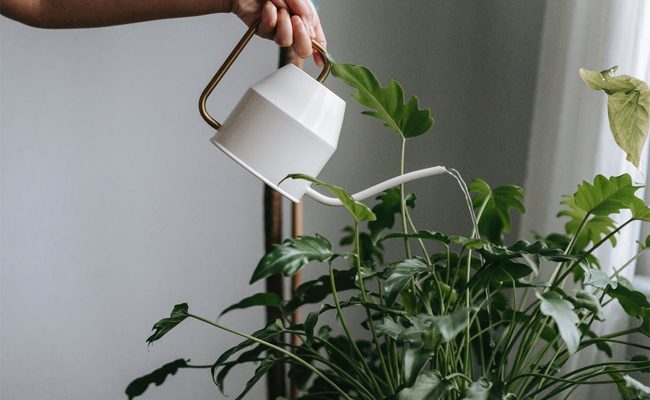
You may be wondering How to water indoor plants? It’s not difficult, but there are some things to keep in mind. In this blog post, we’ll teach you the basics of watering your plants and offer some tips on how to do it best. Happy planting!
Give water to your plants in the morning so that they have time to dry themselves before the nightfall
Watering your plants in the morning is a great way to ensure that they have enough time to dry before nightfall. This is especially important in the summer months when temperatures are high and humidity levels are low. When watering your plants, be sure to give them a good soaking. This will allow the roots to absorb the water they need and prevent them from becoming too dry. Be sure to empty any excess water from the saucer or tray after watering. This will help to prevent root rot and keep your plants healthy.
Use room temperature water – cold water can shock the plant’s roots
Water is one of the most important elements for a thriving houseplant. While all plants need water to survive, each type of plant has different watering needs. Over watering is just as harmful as not watering your plant at all. To avoid harming your plant, it is important to use room temperature water. Cold water can shock the plant’s roots, causing leaf drops or stunted growth. In addition, be sure to check the plant’s soil before watering. If the soil is still moist, wait another day or two before watering again. By following these simple tips, you can ensure that your houseplant stays healthy and Happy.
Don’t over-water your plants – wait until the soil is dry to the touch before watering again
Watering your houseplants is one of the most important aspects of plant care. While every plant is different, and some may require more or less water than others, it is generally best to wait until the soil is dry to the touch before watering again. This will help to prevent root rot, which can occur when plants are overwatered. In addition, be sure to check the drainage of your pots to ensure that excess water can properly drain away. If you have any questions about how often to water your particular plants, be sure to consult a trusted resource such as a gardening book or website. By following these simple tips, you can help ensure that your houseplants stay healthy and thrive.
Add a mulch layer to the surrounding of your plants so they can retain moisture
For many of us, the warmer weather brings the urge to get outside and tend to our gardens. But what about our indoor plants? While they may not need as much attention as our outdoor plants, they still need regular watering and occasional fertilizing. One way to help keep your houseplants healthy is to add a layer of mulch around them. Mulch helps to retain moisture, which is especially important during the summer months when the sun and heat can quickly dry out the soil. In addition, mulch helps to regulate the temperature of the soil, keeping it cooler in the summer and warmer in the winter. So if you’re wondering how to water your houseplants, remember to add a layer of mulch around them first. Your plants will thank you for it!
Use a watering can with a long spout for easy access to hard-to-reach places
While the answer may vary depending on the type of plant and the potting mix, a good rule of thumb is to water when the top inch of soil is dry. One way to make sure you’re not overwatering or underwatering your plants is to use a watering can with a long spout. This will allow you to easily reach all areas of the pot, ensuring that each plant gets the right amount of moisture. In addition, a long-spouted watering can help you avoid getting water on the leaves, which can lead to fungal growth and leaf discoloration. So if you’re looking for an easy way to water your houseplants, reach for a watering can with a long spout.
Collect and group the plants together depending on their water needs
Watering houseplants can be a challenging task, especially if you’re not sure how often or how much to give them. One helpful way to keep on top of things is to group your plants together according to their water needs. For example, plants that require frequent watering can be placed in one area, while those that need less water can be grouped together elsewhere. This way, you can quickly and easily see which plants need attention without having to check each one individually. Additionally, grouping plants together according to their water needs can help to prevent overwatering, which can be just as harmful as underwatering. With a little planning and organization, you can ensure that all of your houseplants stay healthy and happy.
Conclusion
So, now that you know how to water your houseplant, it’s time to get started! Be sure to keep an eye on the soil and give your plant a good drink when it needs one. With a little bit of TLC, you can enjoy your green friend for years to come. Moreover, If you want to learn more about watering and growing flowers and vegetables in your backyard you can check out some amazing tips from nurserylady for that.
Leave a Reply